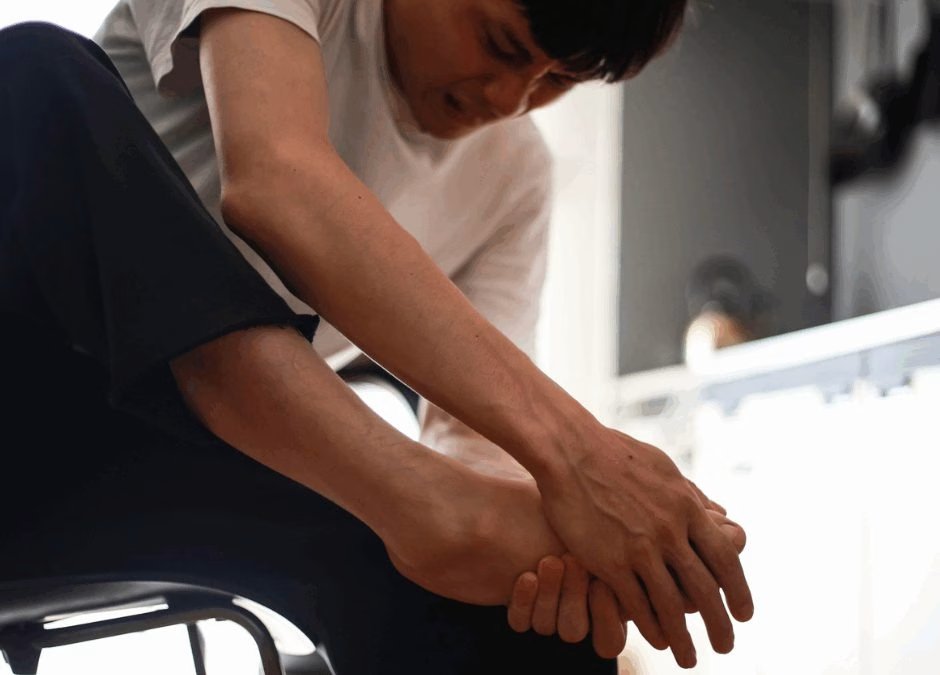
Can ingrown toenails get infected – if so, how? Everything you need to know about ingrown toenails & more in this blog. Stop by AFC for prompt care.
Keeping up with your kids at FearLess Adventure Park is not for the weak. After a fun-filled day on your feet, you think that soreness in your toe will fade in the morning. But then the dull ache turns into sharp pain, and soon, you notice your toenail growing into your skin. Now, your toe looks swollen, tender and red. Could it be infected?
Ingrown toenails are not only uncomfortable, they can quickly progress from a minor nuisance to a painful medical issue if left untreated. While some early cases can be managed at home, an infected ingrown toenail often requires professional care. But should you wait for your primary doctor, or can an urgent care clinic handle it?
Here’s everything you need to know about identifying, treating and preventing ingrown toenails.
What Is an Ingrown Toenail?
An ingrown toenail happens when your nail grows into the surrounding skin instead of over it. This can irritate the skin and, if ignored, lead to painful infections. Typically, ingrown toenails are found on your big toe.
Common causes include:
- Cutting toenails too short
- Rounding the edges of nails instead of trimming straight across
- Wearing shoes that are too tight or narrow, which press the nail into the skin
- Toe injuries, like stubbing or jamming
- Repeated stress from sports or activities such as running, soccer or dance
- Genetics, since some people naturally have curved toenails
Signs you may have an ingrown toenail:
- Tenderness along the nail edge
- Swelling or redness
- Hardness around the nail fold
At first, an ingrown toenail may feel more annoying than serious. But without care, it can progress to infection.
When an Ingrown Toenail Becomes Infected
If your toe is throbbing and worsening instead of improving, it might be more than just irritation. Watch for these symptoms of an infected ingrown toenail:
- Increasing redness and swelling
- Severe, sharp pain
- Pus or drainage from the nail
- Bleeding around the nail bed
- Fever, chills or feeling unwell
If you notice these signs, it’s time to seek medical attention. At AFC Mooresville, our experienced providers can evaluate your toe and get you on the road to recovery.
What Causes the Infection?
The medical term for an infected toenail is paronychia. This type of infection develops when bacteria or fungi enter the skin near the nail – often through small cuts, irritation or pressure from the nail itself.
While anyone can develop paronychia, certain groups are more prone to infection, including:
- People with diabetes
- Individuals with circulation problems
- Those with weakened immune systems
Treatment Options
At-Home Care (for mild cases)
If your ingrown toenail is caught early, you can try these steps before heading to urgent care:
- Soak your foot in warm, salty water for 15–20 minutes to soften the nail.
- Gently lift the nail edge with a clean wedge and place a small piece of cotton or dental floss underneath to encourage proper growth (change it daily).
- Apply antibiotic ointment to prevent infection.
- Bandage your toe lightly and wear open-toed or loose shoes to reduce pressure.
Professional Care (for moderate to severe cases)
If the toenail is already infected or too painful to manage at home, visit our urgent care clinic. We can provide:
- Antibiotics – Prescription creams or oral medications to clear infection.
- Wedge resection – A quick, non-surgical procedure that removes part of the toenail to relieve pain and prevent the nail from digging in further.
- Specialist referral – In rare or severe cases, we may refer you to a podiatrist for advanced treatment.
Prevention Tips
The best way to deal with ingrown toenails is to avoid them in the first place. Here are some simple ways to protect your toes:
- Trim toenails straight across instead of rounding the corners.
- Don’t cut nails too short, leave enough nail to cover and protect your toes.
- Wear comfortable shoes and socks that don’t squeeze or crowd your toes.
- Keep feet clean and dry, especially after swimming or sweating.
Wrapping it Up
Here at AFC Mooresville, we know how frustrating and painful an ingrown toenail can be. Whether you need antibiotics, a minor procedure or simply peace of mind, our medical team is here to help. The best part? No appointment is needed – just walk in at a time that works for you. We’re open seven days a week, accept most insurance plans and offer affordable cash-pay options.
Don’t let foot pain keep you from enjoying life in Mooresville. From hiking the trails to cheering your kids on at their sports games or concerts, your feet deserve to feel their best.


